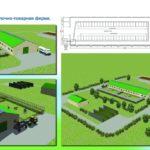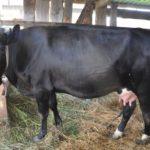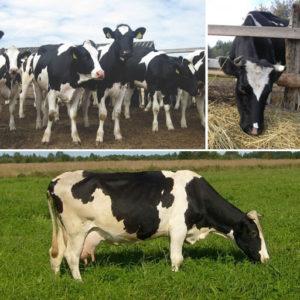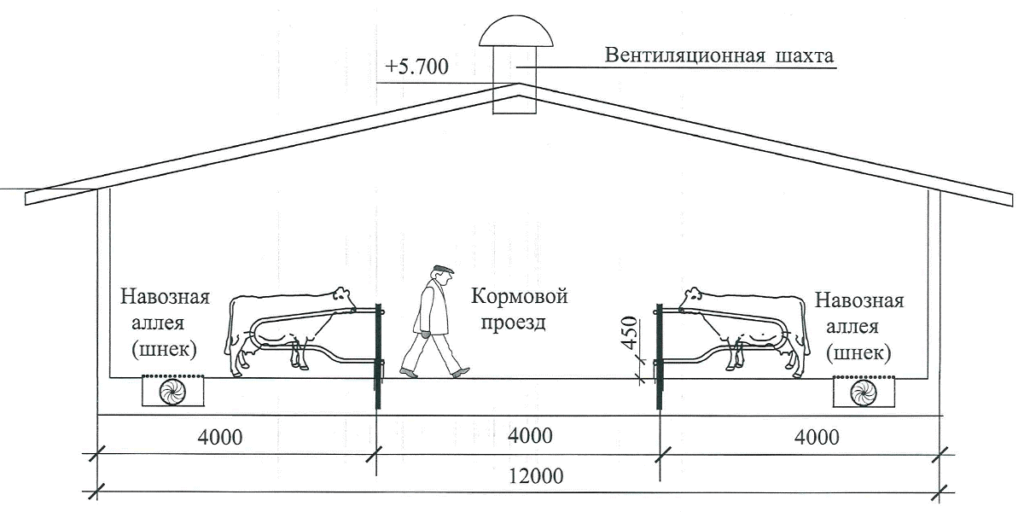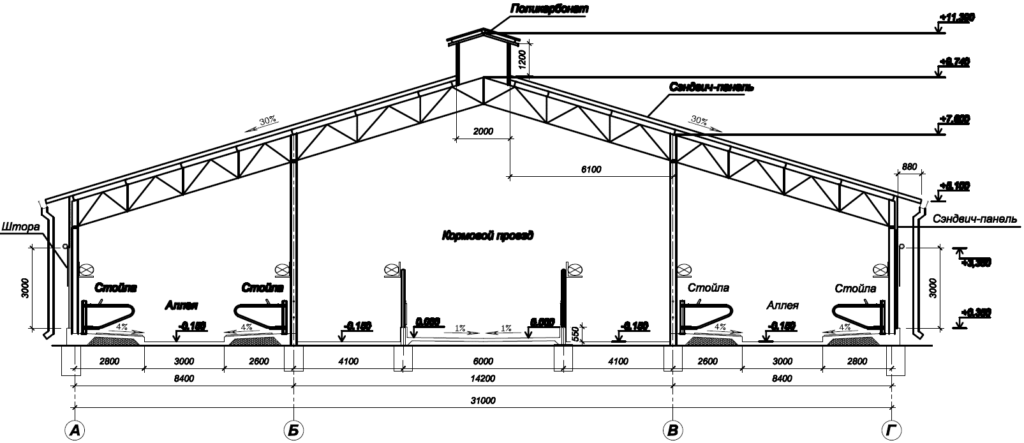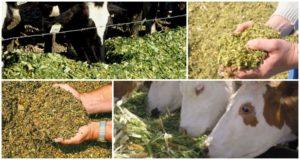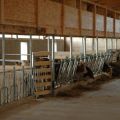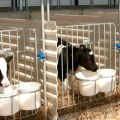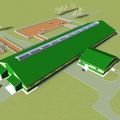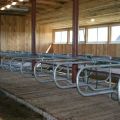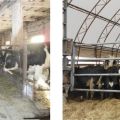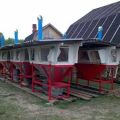Project and scheme for the construction of a barn, how to make a stall with your own hands
Creating cowsheds in a village or suburb with your own hands, on your own, requires care, careful calculation. Their productivity depends on how the requirements are taken into account, the conditions for keeping animals are met. It does not matter whether it is planned to build a cowshed for 2 heads or 10. It is imperative to be guided by sanitary standards, general rules of construction production.
Types of barns
Cowsheds, as free-standing buildings, are classified according to several criteria. First of all, this is the number of animals kept there. There are mini-farms for 3 heads, for 10, 20 and more. Large barns can simultaneously contain up to hundreds of animals. It is allowed to combine several functional areas under one roof, in a building: for feeding, walking, milking.
The more animals there are, the more space they occupy. One cow requires 2.3-2.4 square meters (bedding), sometimes up to 6 square meters is indicated. This is the minimum “comfort zone” for cattle on the farm. Building area norms can be found in veterinary reference books, information is publicly available.
An example of a barn is shown in the video:
The second factor affecting the configuration of the truss is the direct purpose of the building. It is preferable to separate on the farm heifers and gobies, growing up and already sexually mature young. Each animal in the barn should have a separate stall, physically fenced off from other areas.
The third criterion relates to the type of barn and climatic zone. In warm areas, it is possible to limit the creation of a light paddock with protection from precipitation. In a cold area, you will need the construction of a full-fledged farm with insulated walls, a vestibule, and a heating system. Separate creation of seasonal cowsheds (light summer and capital winter) is justified if large-scale breeding of animals for milk and meat is planned.
In a mini-farm for 3-5 heads, it makes no sense to build buildings for each season.
Choosing a place for construction
A barn with an equipped stall for a cow must be located in certain conditions, terrain. This includes sanitary, geological, veterinary standards for keeping animals on the farm. It is better if it is a detached building, remote from residential buildings.
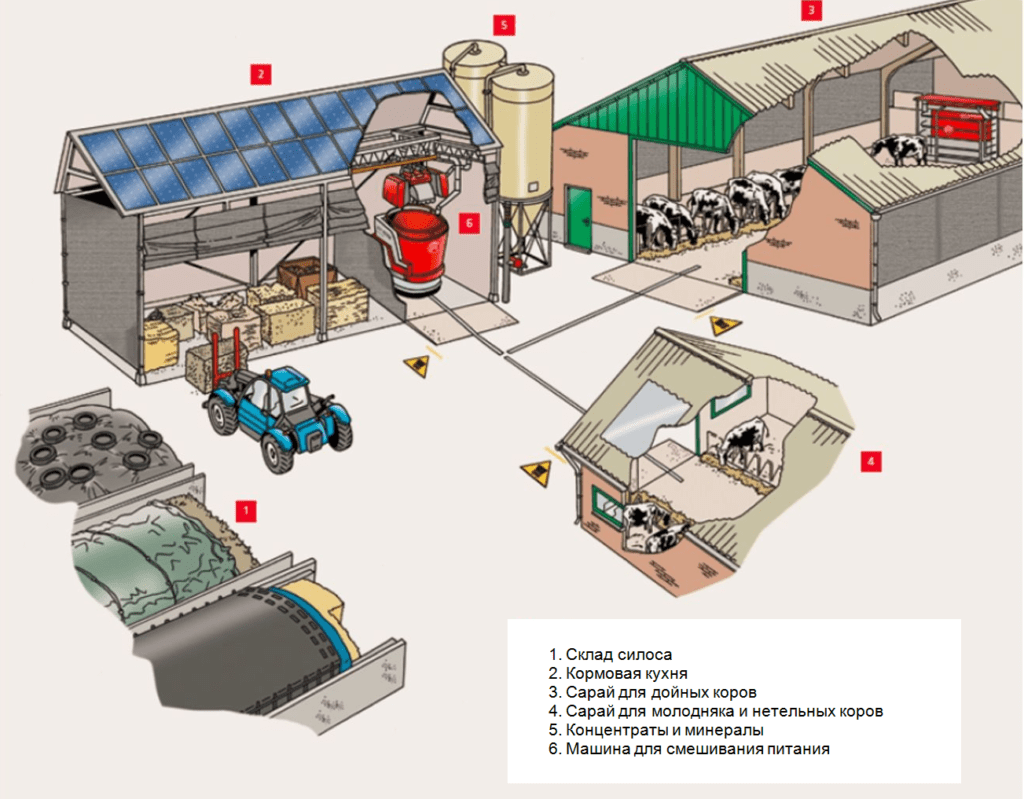
It is not allowed to build a cowshed in lowlands, in wetlands, close to industrial facilities, factories or workshops. You cannot build a farm building on the sites of former cattle burial grounds, waste burials, landfills.
The cowshed should not be located near water sources, wells, pipelines, canals, wells. The permissible distance of the building is 20-25 meters. The farm is separately supplied with electricity, running water and a sewerage system. It is best to choose an elevated, level place for the construction of a cowshed with good transport links.
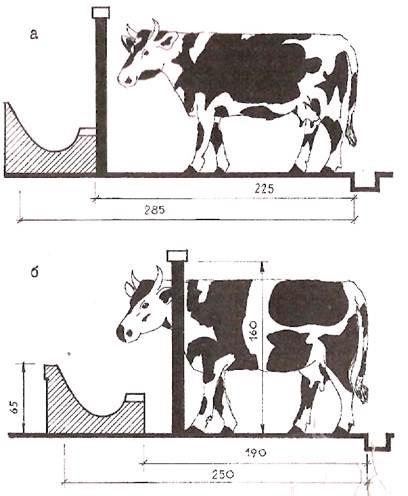
Also, the route of pasture of cows to pasture, delivery of young animals to the barn or fence for slaughter is calculated. For this, a plan for the future construction of a barn is created, where all the data "little things" that affect the choice of location are indicated. If it is not possible to build a barn on a separate territory, the farm building is included in the existing infrastructure, taking into account all the above requirements.
What tools and materials will be needed
Budget options involve construction with a minimum consumption of expensive materials, on a cheaper strip foundation, using the physical strength of a person (and not mechanisms, construction equipment).
Most often, for the construction of a farm, pine is used in the form of boards, timber, relatively inexpensive, affordable and easy-to-use lumber.
An important argument in favor of choosing wood is the fact that it is relatively easy to handle by hand. It is not difficult to cut measured lengths (or order at the sawmill) of the required dimensions and quantities. Fastening of the wooden parts of the barn is done with nails driven with a hammer, or with screws, metal brackets, corners.
Both are not a problem, in contrast to the assembly of a barn from metal structures, where you will definitely need a power tool for cutting, stripping, and special equipment for welding. And the calculation of the metal frame of the barn is technically more difficult, requires special knowledge (involving professional designers).
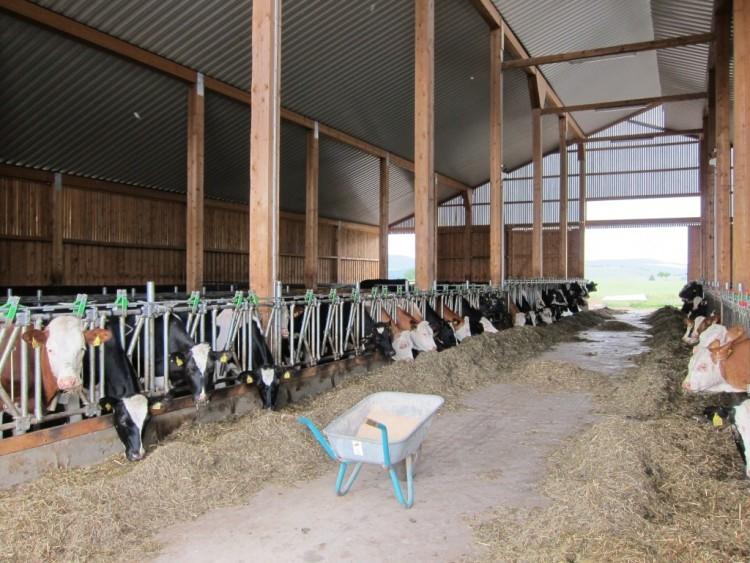
The lumber itself on the farm can be taken not first-class, but with minor defects, knots or substandard. A small barn for 3-5 animals can be built using a minimum of tools. You will need wood saws (preferably 2-3), a nail puller, a pair of medium weight locksmith's hammers.
If the foundation pit for the farm foundation is to be dug manually, you will need several shovels - bayonet and shovel. Earthworks are among the most labor-intensive. In addition, before digging, you need to make a breakdown on the ground, apply a scheme for placing the contours of the building. The very foundation of the barn is more expedient to create from concrete, a practical and durable material. Therefore, you will need crushed stone, sand, cement and reinforcement.
An example of a wooden barn is shown in the video:
When building a large farm, mechanization is indispensable. Trenches for laying the tape are cut by an excavator. Their depth is determined by the soil freezing parameter. In difficult geological conditions, on subsiding soils, in seismically hazardous areas, it will be necessary to build a pile foundation for a barn.
Under the bored piles, the soil is selected with a hand drill. You can make it yourself or purchase it. For cold areas, the walls, the roof of the farm are insulated with some kind of synthetic material (foam, glass wool, roll insulation). The temperature inside the barn must be above zero in winter.
The covering of the farm must provide protection from precipitation, keep precious heat in the cold season. In the southern regions, it can be polycarbonate fixed on arches. In this case, the barn itself looks like a light pen. For the middle lane and colder regions, the roof of the farm is made of asbestos-cement sheets, metal tiles, profiled sheets.

The consumption of materials for the barn is determined by calculation or according to established norms. You can order this part of the project along with drawings and diagrams, calculate it yourself using special programs.
In addition to the standard set of tools, you will definitely need measuring instruments - a tape measure (folding or electronic), a building meter, as well as a plumb line and a level. They will help to maintain the size of the building, control the parameters.
Drawings and dimensions
It is best to borrow a ready-made scheme of the future barn, and not draw up yourself. It should take into account all dimensions, dimensions, location of gates, doors, windows. Do not forget about the farm communications: there are strict rules for their installation.
It remains to choose a project that suits your own needs, corresponding to the planned livestock, and download the drawings of the barn. The detailing of the farm building in the form of plans, sections, individual units is important. This information will allow you to avoid critical errors, complete the construction of the farm efficiently and on time.
The dimensions of the building are directly related to the number of animals contained in it, the purpose. For large objects, designed for 50 or more heads, separate stalls are created on both sides of the room, with a central aisle in the middle. (1.2-1.5 meters).
If there are fewer cows, the pass through the barn can be made from the side, left or right.

It's not bad if a utility room is designed in the building for people, storage of inventory. The width of the farm gate is chosen in such a way that animals can enter and leave without hindrance, without crowding. In this case, people use a separately provided entrance. The dimensions of the window openings provide a sufficient level of illumination. The creation of a canopy at the top of the barn roof creates an additional light source.
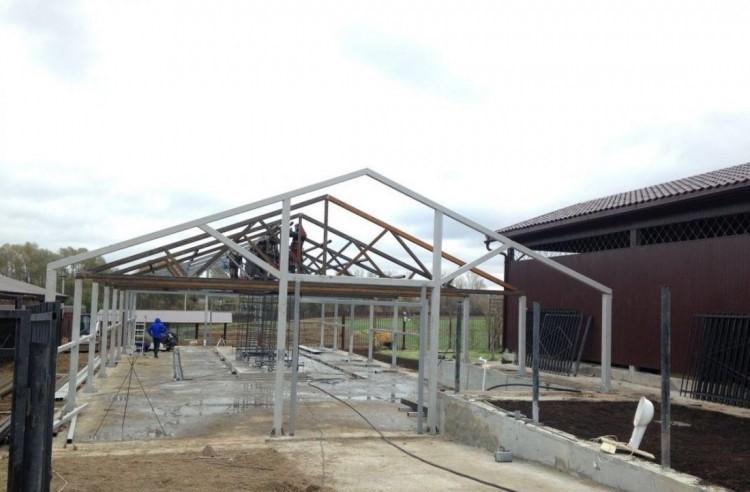
It is convenient that for finished projects the approximate consumption of materials is often indicated. This will eliminate the need to recalculate the norms yourself, manually.
Step by step construction
Professional builders break down the entire construction of a building into stages. This allows you to control each operation, improve the quality of work and reduce labor costs.

It looks like this:
- Layout of the site.
- Foundation.
- Floor, sewerage.
- Walls.
- Roof.
- Filling openings (windows, doors).
- Ventilation, electricity, running water.
The step-by-step execution of procedures greatly simplifies the process itself, speeds it up.
Step 1. The construction of a barn begins with the selection of a site, its layout. Next, a breakdown of the building section is performed. This may require a specialized tool (if the object is large). For compact barns, a tape measure will be sufficient.
In the corners of the future building, pegs are hammered onto which a white cord (sold in hardware stores) is pulled. Then they move on to the next stage - the zero cycle.
Step 2. Digging a solid foundation pit for a farm is impractical, since it increases labor costs and requires the use of mechanisms.
It is allowed to make trenches at the locations of the strip foundation under the capital (bearing) walls of the barn, while controlling the depth of the pit. The choice of base structure depends on the soil and the size of the building. Tape or pile foundation options are used.
Step 3. When the concrete has set, they begin to build a gutter - it is needed to eliminate the waste generated in the process of raising cows. Then the floors of the farm are laid.
Step 4. When installing the wall structures of the truss, regardless of their type (wooden, brick, on a metal frame), the verticality, compliance with the design dimensions are controlled.
Step 5. After the walls of the barn are completed, they proceed to the overlap (covering). This is the part of the building that provides horizontal rigidity.It is possible to create an attic or a technical floor, where the required communications, including ventilation, will be placed.

The choice of the building roof structure affects the materials used and their consumption. For a gable cover, you will need to erect girders, observe the slope. In small barns, a flat roof at a slight angle is sufficient for rainfall to drain.
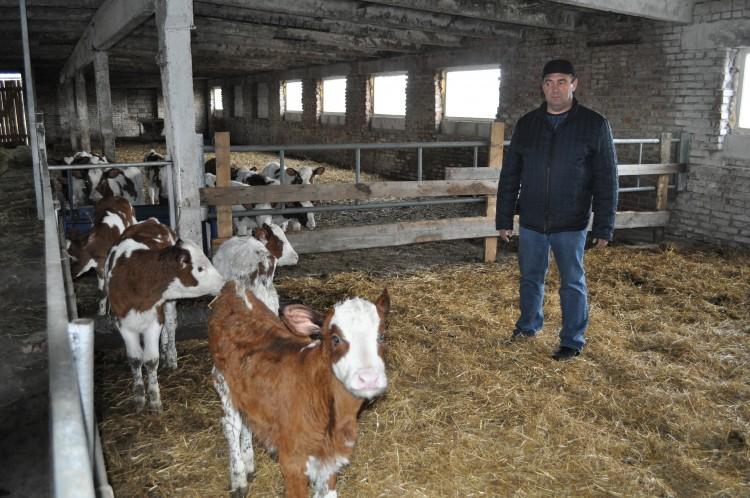
Step 6. When the “box” is completely finished, you can begin to equip window and door openings, lay communications. This completes the construction of the farm.
Foundation
It is impossible to build a barn without a foundation. This is contrary to building codes and unsafe. If it is possible to use a tape design, as it is cheaper, it should be used. The depth of the laying is determined according to the normative documentation, it is tied to the climatic region.

The number of reinforcement, its pitch and profile are determined by calculation. As a last resort, they are taken from a typical project. It is impossible to do without reinforcement, this reduces the bearing capacity of concrete several times. Before filling, the places for laying the sewerage system and gutter are outlined. Then the formwork is installed in the prepared trench, the reinforcing frame is laid.
The poured concrete mix gains 30% strength after 72 hours. This indicator depends on the brand of cement, temperature and humidity. After the specified period, you can proceed to the next stage.
Floor and gutter
Wood floors are preferable to others because they can be made by yourself, with a minimum of cost and experience. Logs are laid in front of the flooring. These are wide boards or even trims from the top of the logs (slabs) to which the floorboards will be attached. Between the logs and the ground, an air gap always remains so that the tree does not rot.
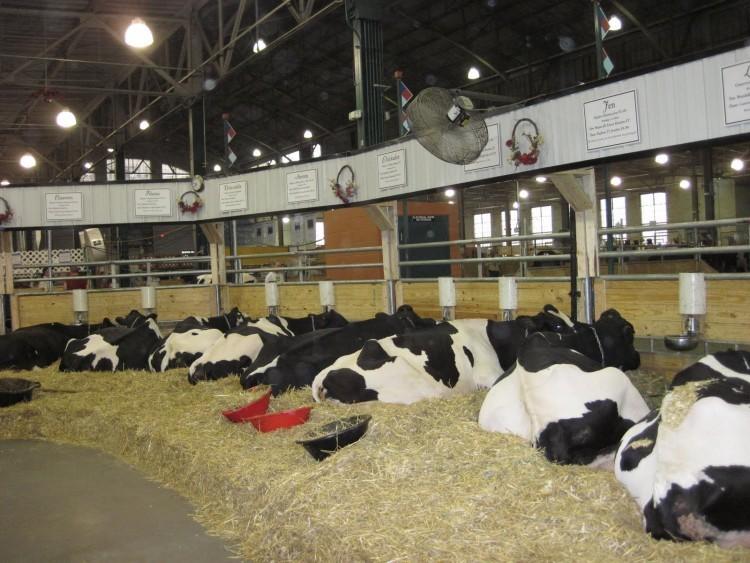
Do not forget about the impregnation of wood, so the structures will last longer. The drainage ditch is arranged directly in the floor with lining of its walls with metal, brick or cement mortar. This measure is necessary to avoid seepage into the ground.
The ditch exit ends outside the building, in a cesspool or manure tank. A slope should be provided so that faeces from the farm can drain into the container by gravity.
Walls
Before building a barn, a cowshed, choose the design of the walls. It is easier than others to build structures made of wood.
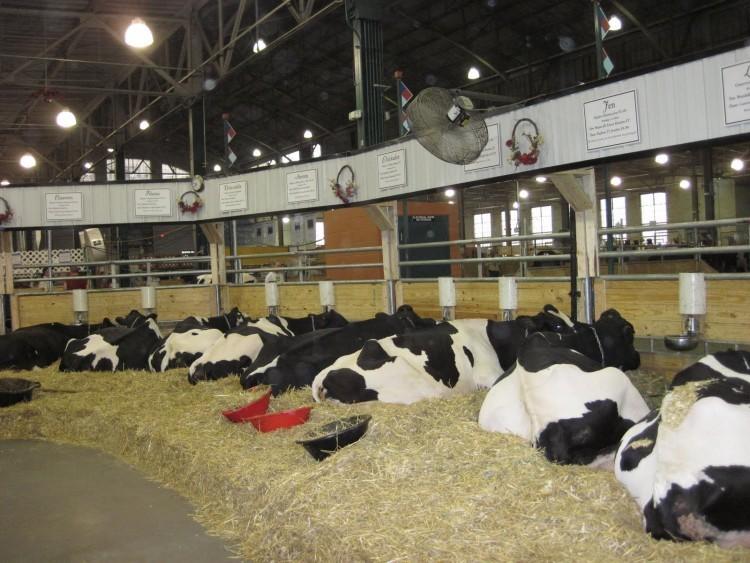
It doesn't matter if it will be solid wooden boards or sheathing along the frame of the truss, the verticality, compliance with the design dimensions, is necessarily controlled.

Openings for the windows and doors of the barn are constructed in strictly defined places. If you miss this circumstance when erecting the walls of the truss, you will have to interrupt later in order to eliminate the error.
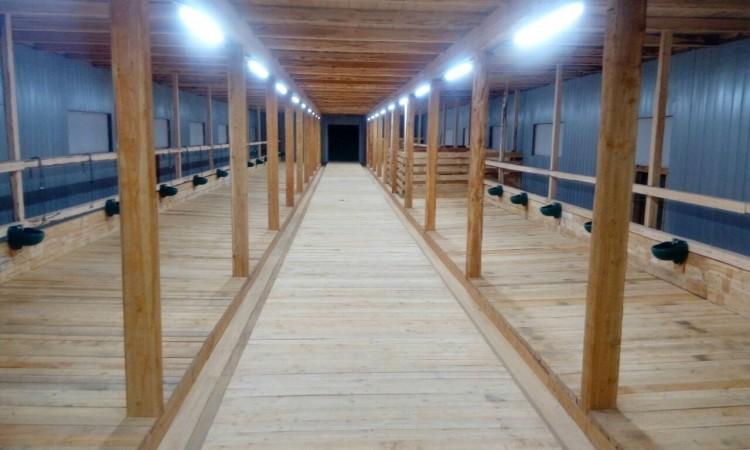
The method of fastening the barn structures must provide the required rigidity and stability. It is not worth saving on nails, screws, corners.
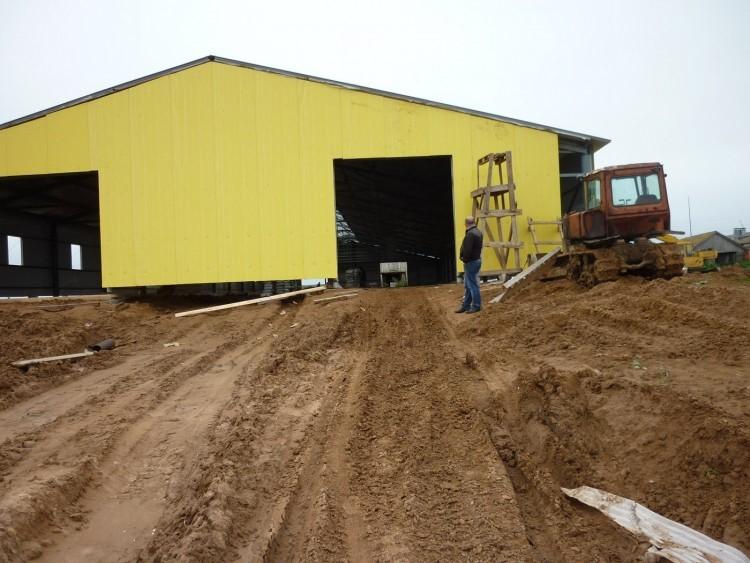
Roof
The covering completes the construction of a wooden barn, not counting the installation of communications, filling the openings. Beams connect the walls of the building together, forming a single structure. Depending on the option chosen, a pitched, flat roof or with a skylight is constructed.
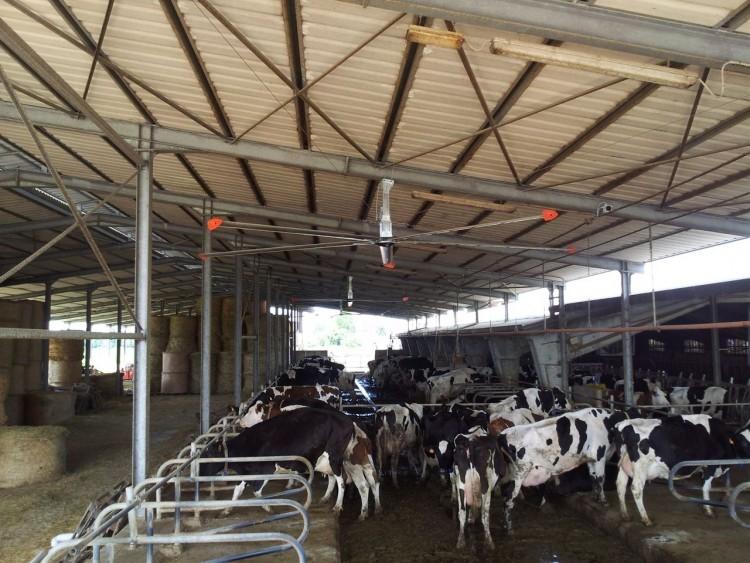
Each type requires specific calculations, therefore it is selected in advance. The roof is laid directly on top of the supporting structures of the truss covering. For sheets, metal tiles, slate, you will have to make a crate - this way it will be possible to fix the material, tie it to the covering of the building.
Windows and doors
The number of windows in the barn is determined by calculating the illumination. The number and size of the doors - by the livestock, the needs of the owners. The design of the window frames in the farm building must ensure the possibility of ventilation, opening.
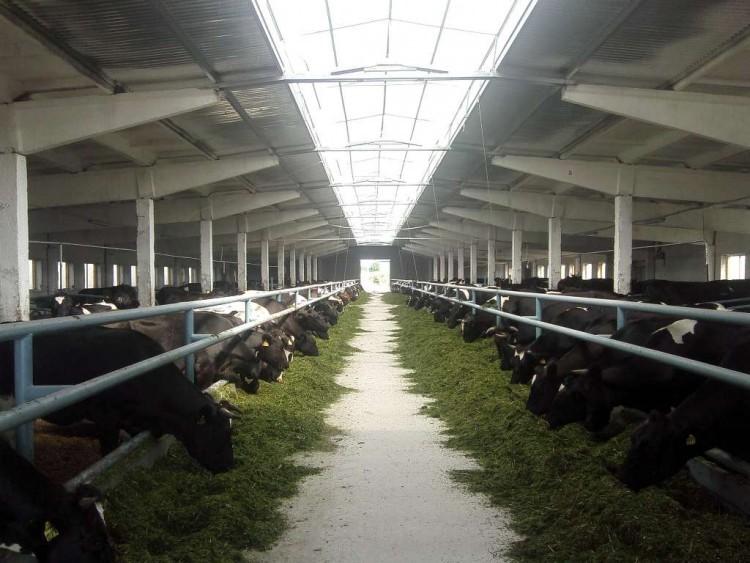
The main requirements for the doors in the barn are strength, reliability, and the presence of constipation.The hinges must freely support the weight of the gate and leaves. The most popular materials are wood, PVC.
Ventilation
Regardless of the size, type of barn building, ventilation is needed. According to a simplified scheme, the inflow (supply) of air occurs from the vents or special intakes, the outflow - through the fungus in the roof of the farm (forced by a fan).

This solution will provide sufficient aeration, animal health.
Communications
The arrangement of the required communications in the barn is made in accordance with the needs of animals, owners. There should be minimum lighting, water, electricity and heating.
They are laid down at the design stage. For large farms, provision should be made for equipped connection points for milking machines, electric heaters, cleaners and other equipment.
Tips & Tricks
When choosing wood as the main material, the following are taken into account in advance: the number of "tenants", the pitch of the racks in the frame, which depends on this parameter, the height of the barn, the cross-section of the bearing elements. It is allowed to use glued laminated timber, splicing beams or crossbars.
Bored piles in the foundation of a farm are economically more profitable in relation to driven ones. Their depth is related to the load from the walls, their type (wooden, brick, from blocks). The use of wooden piles in the barn is undesirable for the reason that a tree immersed in the ground will deteriorate relatively quickly and rot.
If it is planned to keep a large number of animals in the barn at the same time, additional functional premises of the farm should be provided. For example, such as the isolation ward for sick cows. If there are young animals in the barn, as well as recently calved animals with calves, they are also allocated a separate zone.
